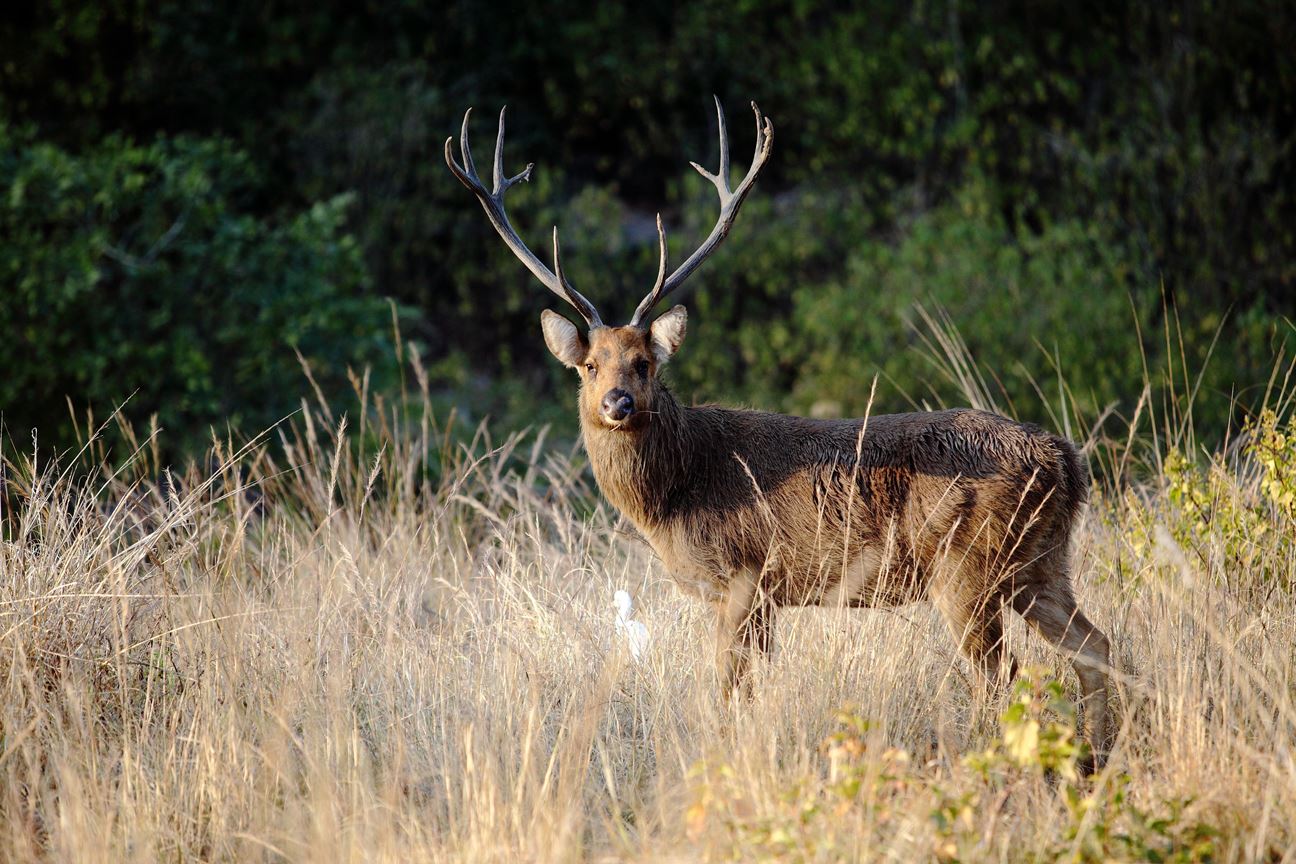In the last 50 years or so, the species’ number went from 67 to 800, thanks to the persistent conservation work carried out at Kanha National Park.
Barasingha, an endemic to Kanha National Park, also happens to be the state animal of Madhya Pradesh. Of the three sub-species of the swamp deer, The Southern Swamp Deer exclusively lives in central India, particularly in the Kanha National Park. Unfortunately, years of habitat loss, deaths due to diseases, hunting, and the presence of human activities inside the park led to a steady decrease in their population. The number dipped from 551 to just 66 in the span of 14 years - from 1953 to 1967. But hope was not lost. What followed were consistent and dedicated conservation efforts.
 A male barasingha seen in its natural habitat at kanha national park, india
A male barasingha seen in its natural habitat at kanha national park, india
Conservationists successfully brought the Barasingha back from extinction through their many conservation experiments. These include captive breeding programs, habitat improvement, and translocation of the swamp deer. In early 2000, few swamp deer were translocated to Bandhavgarh National Park as a part of the experiment, but it turned out to be a failure. In the following years, a few more translocation programs failed. This trend was seen in Nepal, too. In 2017, seven swamp deer were moved into Chitwan National Park from Shuklaphanta National Park, of which six died the following year.
In India, the efforts continued. Since 2016, over forty swamp deer have been translocated to the Satpura Tiger Reserve. While some of them died due to stress from moving between the zones, the numbers kept increasing nonetheless. In January 2020, the number of Barasingha in Saputara National Park was eighty.
A few swamp deer were also shifted to Van Vihar National Park in Bhopal and are showing an increase in numbers to date.
From 450 in 2015, the numbers consistently went up to more than 800 currently. The field director of Kanha National Park and Tiger Reserve has commented that a herd of 10-20 deer can be seen roaming in the fields and meadows inside the park.
The three species of swamp deer are the Western Swamp Deer (Rucervus Duvaucelii) which are found in Nepal, the Southern Swamp Deer (Rucervus Duvaucelii Branderi) found in central India, and the Eastern Swamp Deer (Rucervus Duvaucelii Ranjitsinhi) found in northeastern India in the Kaziranga and Dudhwa national parks. Swamp deer are already extinct in the neighbouring countries of Pakistan and Bangladesh.
The Kanha National Park is one of the most visited tiger parks in India. The park is spread over 1945 square kilometres and is home to over 150 tigers among many other wild animals.